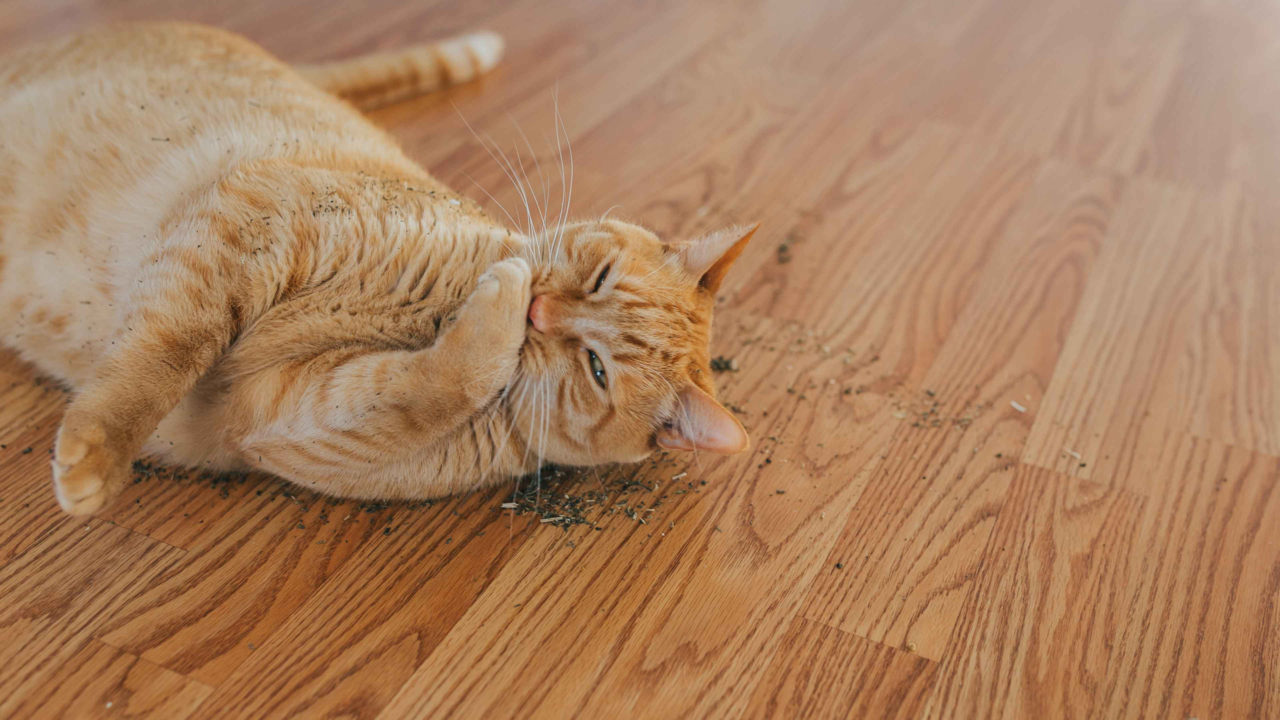
What is Catnip?
Cat’s often have a busy day of figuring out where to sleep, who’s lap to sit on, what to scratch, who to ignore… and it can be stressful. Luckily, mother nature has grown a natural stress relief for our furry felines. If you have a furry feline friend, chances are you have come across catnip products - from toys to sprays to infused scratchers. This natural kryptonite can be quite popular with your kitty so we thought we’d take a look into what it is and how it affects your cat.
Code Name Nepeta Cataria
Catnip is derived from a plant called nepeta cataria, a member of the mint family, and is non-toxic to cats. Nepeta cataria has a pleasant smell that cats are naturally attracted to. Also known as catmint, the catnip plant contains a chemical compound called nepetalactone in its leaves and stems. It’s this compound that attracts cats and affects their cat behaviour. It is native to southern and eastern Europe, the Middle East, Central Asia and parts of China.
While many cats have physical reactions to catnip, not all cats are susceptible to its alluring properties. Catnip sensitivity is an inherited trait (about 1 in 3 cats) and those that do not carry it seem to be immune to the effects of catnip.
Effects on cats
When sniffed, nepetalactone in catnip is a stimulant that produces a “high” that lasts about 10 minutes before wearing off. Stimulation can lead to increased exercise and play, which can help keep your cat in shape, physically and mentally. When eaten in moderation, catnip works as a sedative, calming your cat and reducing stress. Catnip’s calming properties are especially beneficial introducing your cat to situations where she may suffer from increased anxiety. Natural dried catnip has high concentrations of catnip oil, so feeding your feline a bit of catnip before travelling can reduce symptoms of stress and anxiety.
Unlike some drugs, there seem to be no addictive qualities to catnip. However, cats that are exposed to catnip daily may lose their sensitivity to it and become less attracted to it. It is recommended to use a little bit at a time like a special treat.
Cats that do react to catnip, can have different reactions. Some 'highs' that cats expereince can alter their behaviour making them more agressive. This should stop as the effects of catnip wear off. If you are concerned about the effect on your cat's behaviour, consult you vet.
Even though catnip is non-toxic, it has been known to cause stomach upset in cats, esepcially if a large amount is ingested. You should refrain from giving your feline catnip if it leads to diarrhoea or nausea. Consult with your vet before using catnip if you may be concerned how your cat could react.
Catnip options
A variety of pet products can contain catnip due to its ability to excite and relax cats. You can get dried catnip to sprinkle a small amount onto your cat’s food for a calming effect, or catnip oil that can be bottled up in a convenient spray that you can use on your cat’s toys to excite and motivate play. You can also use catnip oil when training cats to use a scratcher, saving your rug or couches. There are even stuffed catnip toys for your kitty’s amusement.
Catnip is a natural way to motivate your cat to play and get the exercise they need to maintain a healthy weight. When ingested, the natural properties of the catnip plant can help calm and reduce anxiety in your stressed kitty. With these benefits, it’s no wonder why cats go crazy for catnip.
Alternative
If your feline friend doesn’t seem to react to catnip, an alternative to try is Actinidia polygama, otherwise known as silvervine. This plant is native to the mountainous regions of China, Japan and Russia, and gets its nickname from the silver-white marks on its leaves. Silvervine is a member of the kiwi fruit plant family and produces white flowers and edible fruits (the fruit galls are the most potent parts).
Unlike catnip, silvervine contains more active ingredients like nepetalactol, actinidine and dihydroactinidiolide that stimulate the reward/pleasure centre in a cat’s brain, the same way that opioid does for humans. However, silvervine is not addictive to cats.
It is widely used as a cat stimulant in some Asian countries. Similar to catnip, your cat may experience a “high” when exposed to silvervine in toys or scratchers. This can lead to rolling, chin/cheek rubbing, meowing, drooling and/or licking. In Japan, this “high” is known as the ‘matatabi dance’, which refers to the way cats wiggle/move on the floor after being exposed to silvervine. The effects generally last from 5-20 minutes. However, reactions vary from cat to cat and some may not react at all.
You can find silvervine toys that also have catnip - twice the benefit in one.
Consult your vet to see whether your cat may benefit from silvervine or catnip as each cat may react differently. Always start off in small amounts and increase gradually.
We hope this has shed some light on catnip and silvervine as an alternative. If you need any further help or have a question we haven’t answered, contact our friendly Petdirect Customer Care team on 0800 200 240 or email support@petdirect.co.nz